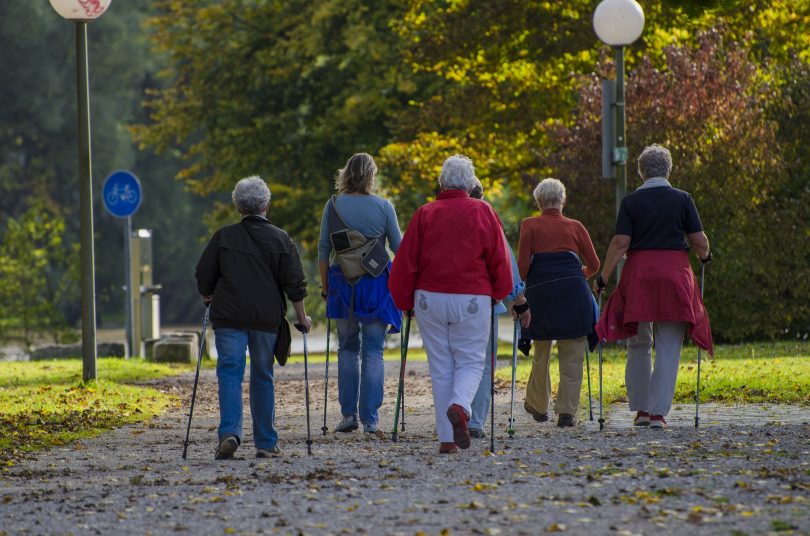We all know that regular exercise is good for us, but many people with chronic health conditions face barriers that make it difficult to be physically active.
Getting enough physical activity can be especially tough for people living with kidney disease, who commonly experience fatigue, aching bones and joints, muscle weakness and poor sleep.
“We’re all concerned about improving the quality of life of our renal patients. That’s the bottom line,” says Susie Neufeld, a physiotherapist in the renal program at St. Paul’s Hospital.
Neufeld is part of a research team that recently investigated the effects of a Nordic walking program on renal outpatients. Their study found that walking with specially designed poles improved the fitness and quality of life of people with kidney disease.
The results were promising – so much so that the renal program at St. Paul’s has agreed to allocate funding to continue the Nordic walking program for patients.
Let’s walk and roll
Walking is widely recommended for maintaining general health. Nordic walking, a type of exercise where regular walking is enhanced by using a pair of poles, originated in Finland as a way for Nordic-skiers to train in the off-season. A cross between a ski pole and a walking cane, the extendable devices adjust to the user’s height and have a wide rubber base for stability.

St. Paul’s renal program physiotherapist Susie Neufeld and dietitians Leonora Chao, Dani Renouf and Vicky Ngo recently investigated the effects of Nordic walking on the health of kidney patients.
“When you’re walking with the poles you use your upper body muscles to a greater degree,” explains Leonora Chao, a renal dietitian at St. Paul’s and the study’s principal investigator.
That means the individual is potentially burning more calories without feeling like they’re working harder. The poles also let the individual settle into a rhythm that encourages them to walk faster and further. Meanwhile, the ergonomic design and sturdy base provide better balance and a boost of confidence for older adults.
Many studies have shown Nordic walking to be superior to brisk walking without poles. Studies have also shown that hospital-affiliated group exercise programs for renal patients can potentially reduce fears and increase exercise self-efficacy.

Leonora Chao demonstrates how to extend
a Nordic walking pole. The poles used in the study were designed
by local company Urban Poling.
With that in mind, a group of renal program staff at St. Paul’s created the “Walk & Roll” Nordic walking program in 2016 to help their patients get moving under the supervision of staff volunteers.
Encouraging findings
With funding from the 2017 Providence Health Care Practice-based Research Challenge competition, the research team sought to evaluate the benefits and feasibility of the Walk & Roll program. Chao and Neufeld, along with renal dietitians Vicky Ngo and Dani Renouf, were supported by research mentors Sandra Squire and Alison Hoens and research methodologist Sameer Desai from the Centre for Health Evaluation and Outcome Sciences (CHÉOS).
Thirty patients with kidney disease aged 45 to 84 were randomly assigned to an intervention or control group. Armed with Fitbits to record their activity, the first group was offered two supervised Nordic walking sessions per week in the neighbourhood around St. Paul’s, while the second group continued with their own activities.
Despite the Nordic walking group appearing not quite as healthy as the control group at the beginning of the 12-week study, the Nordic walkers tended to have better results at the conclusion. Specifically, they reported better quality of life and showed more improvement in the distance they were able to walk in six minutes, as well as their hand-grip strength.
While the research team says a larger number of participants are needed to confirm their findings more confidently, they are nonetheless encouraged by the positive results and are excited that their study has led to funding to continue the Walk & Roll program for renal patients as part of their clinical care.
The research team would like to thank the volunteers and participants in their study, especially their patient partner for his valuable feedback throughout the entire process. They also express appreciation to the PHC Practice-based Research Challenge competition for funding the study, the St. Paul’s Foundation for funding the Nordic walking toolkits, and renal leadership for their tangible and meaningful commitment to evidence-informed patient-centred care delivery.





